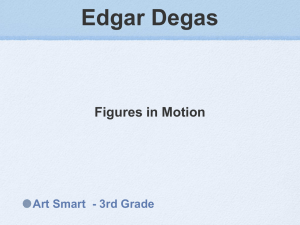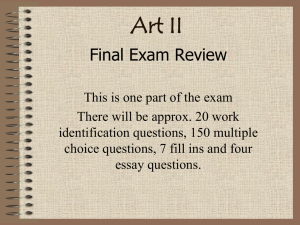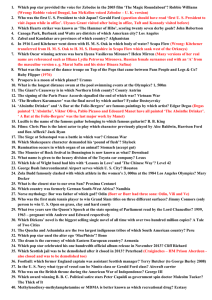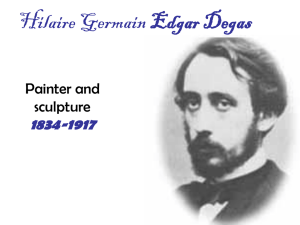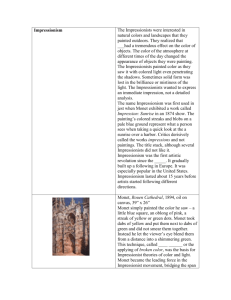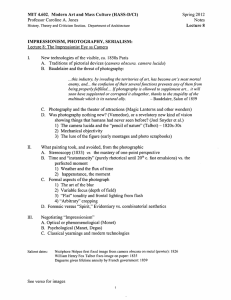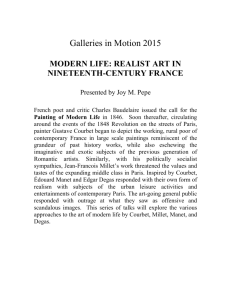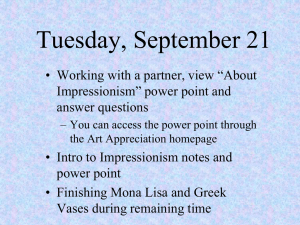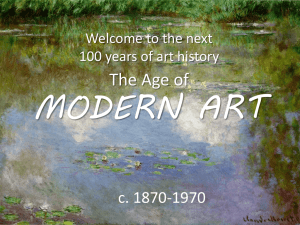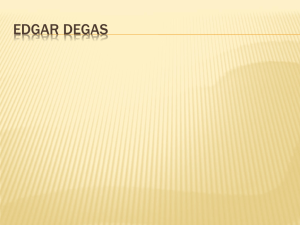Impressionism Part 3, Degas, Cassatt, Morisot
advertisement
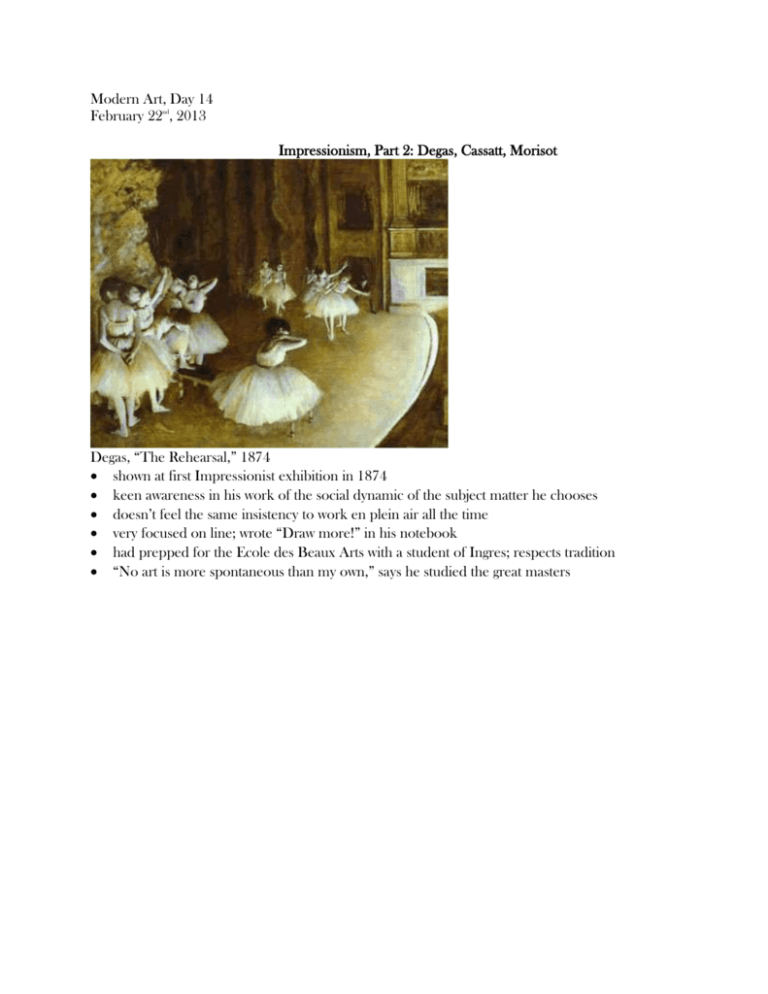
Modern Art, Day 14 February 22nd, 2013 Impressionism, Part 2: Degas, Cassatt, Morisot Degas, “The Rehearsal,” 1874 shown at first Impressionist exhibition in 1874 keen awareness in his work of the social dynamic of the subject matter he chooses doesn’t feel the same insistency to work en plein air all the time very focused on line; wrote “Draw more!” in his notebook had prepped for the Ecole des Beaux Arts with a student of Ingres; respects tradition “No art is more spontaneous than my own,” says he studied the great masters Degas, “Carriage at the Races,” 1872 woman in the carriage is the wet nurse; a very private moment shown cropping; sense of the accidental, capturing life on the fly dog sitting on the carriage is almost in the center of the composition parasol and dog do not overlap each other, giving no illusion of space and acknowledging the twodimensionality of the image Degas, “Bellelli Family,” 1858-67 family portraits become history paintings aunt laura (older woman in black) is a solid giant pyramid; she is the stable figure in the family and is pregnant; family backs her up and gives her strength father is mousy; his back is towards the viewer, he’s barricaded by the chair and fireplace, painted in neutral colors, disconnected from the family girl in middle is conflicted about choosing between her mother and father Degas, “In a Café (Absinthe Drinker),” 1876 (2nd Impressionist exhibition, 1876) Absinthe was made from wormwood which causes deterioration of the brain and was addictive; woman reflects its effects woman’s feet are slovenly splayed out savvy body language and facial expression of the man figures are shoved back into the upper right hand corner of the composition Degas, “Place de la Concorde/Vicomte Lepic and his Daughters,” 1875 subject was a friend of Degas and amateur print maker and breeder portrait of pedigreed individuals, but with family disconnect; figures are all looking in different directions man on left is dramatically cropped visual parallel between nose of dog and nose of girl on the right *side note: “flaneur” means strolling dandy Degas, “Dancers Practicing on the Bar,” 1876 Degas, “Rehearsal Room, Opera on the rue Le Peletier,” 1872 linear patterns in the composition no subject in the center of the painting where we’d expect it Degas, “Rehearsal on Stage,” 1874 straightforward representation of the social life big tip of the bass in the foreground Degas, “Waiting,” 1882 Degas, “Le Defile (Narrow Pass) (False Start),” 1866-68 shows the awkward moment after a false start when one racer left the gate too early and everyone has to reconfigure to start again Cassatt, “At the Opera,” 1879 at this time in history the lights were not turned off for shows, so audience members also looked at each other Cassatt, “The Letter,” 1891 (color etching) shows influence of Japanese prints Morisot, “The Dining Room/ The Little Serving Girl,” 1886 (8th Impressionist Exhibition, 1886) pasty solid painting overlaid with flurry strokes solid opaque faces recall those of Manet; marries Manet’s brother Manet, “Repose (Portrait of Berthe Morisot),” 1870-1 Manet, “Bar at the Folies-Bergere,” 1881 Last great painting that Manet did before he succumbed to illness at age 50 bottles that are reflected behind the girl are not placed the same way in the reflection as the real ones in the image are upper left corner shows the legs of a trapeze artist; makes you aware of the canvas
